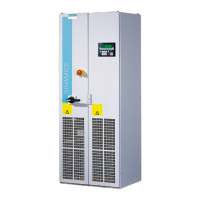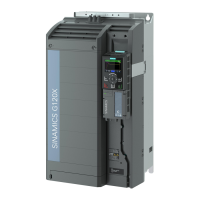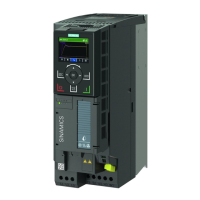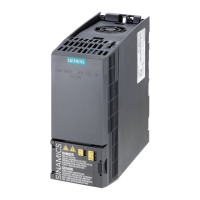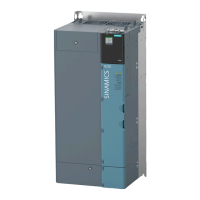9.6 Faults, alarm buer and alarm history
Overview
A fault generally indicates that the converter can no longer maintain the operation of the motor.
The extended diagnostics have a fault buer and a fault history, in which the converter stores the
most recent faults.
Function description
Faults have the following properties:
• In general, a fault leads to the motor being switched o.
• A fault must be acknowledged.
Fault buer
2OG
1HZ
)DXOWFRGH)DXOWYDOXH)DXOWWLPHUHFHLYHG)DXOWWLPHUHPRYHG
'D\V'D\V
U>@
>@
>@
>@
>@
>@
>@
>@
>@
>@
>@
>@
>@
>@
>@
>@
>@
>@
>@
>@
>@
>@
>@
>@
>@
>@
>@
>@
>@
>@
>@
>@
>@
>@
>@
>@
>@
>@
>@
>@
>@
>@
>@
>@
>@
>@
>@
>@
>@
>@
U>@U>@U>@U>@U>@U>@
,IORDWPVPV
Figure 9-4 Fault buer
The converter saves incoming faults in the fault buer. A fault includes a fault code, a fault value,
and two fault times:
• Fault code: r0945
The fault code and fault value describe the cause of the fault.
• Fault value: r0949 in xed-point format "I32", r2133 in oating-point format "Float"
• Fault time received = r2130 + r0948
• Fault time removed = r2136 + r2109
The converter takes its internal time calculation to save the fault times.
System runtime (Page 349)
Up to 8 faults can be saved in the fault buer.
In the fault buer, the faults are sorted according to "Fault time received". If the fault buer is
completely full, and an additional fault is received in the fault buer, then the converter
overwrites the values with Index [7].
Alarms, faults and system messages
9.6 Faults, alarm buer and alarm history
Distributed converter for SIMOGEAR geared motors
354 Operating Instructions, 10/2020, FW V4.7 SP13, A5E31298649B AL

